Sony A6700 vs Fujifilm X-S20 – which is the lightweight hybrid camera for you?
The Sony A6700 looks the perfect mid-range hybrid stills/video camera, but it has a strong rival – the Fujifilm X-S20

This Sony A6700 vs Fujifilm X-S20 shoot-out brings together two important new cameras, both fighting over the same audience and both with video features normally found only on much more expensive cameras.
The Sony A6700 was in many ways a logical camera for Sony to make, updating the old flagship A6600 APS-C model with the sensor and many of the video features from the Sony FX30 cinema camera. Fujifilm, meanwhile updated its entry-level APS-C mirrorless model (or the nearest thing to it right now) with some serious video capabilities which put it into a whole new league.
Both cameras look like instant candidates for the best hybrid cameras you can buy right now, not to mention the best cameras for filmmaking and even the best cameras for vlogging. But even if you've already decided they're the next big thing, you've still got to decide which is best – and that's where come in!
Here you'll find a detailed breakdown of each camera's key specifications and features and how they compare. The Sony A6700 and Fujifilm X-S20 are genuine hybrid cameras equally adept at both stills photography and video, but there are some differences in how they approach specific jobs and what they're like to use.
Of course, if you've already invested in the Sony E-mount or Fujifilm X-mount systems, this will be academic. The best Sony lenses and the best Fujfilm lenses are broadly on a par, so you'll want to stick to the system you've got. Even so, you might want to see just how these two cameras compare in case you ever get the urge to switch systems in future.
So let's go!
Sony A6700 vs Fujifilm X-S20 in 2025
Why you can trust Digital Camera World
1. Sensor/processor
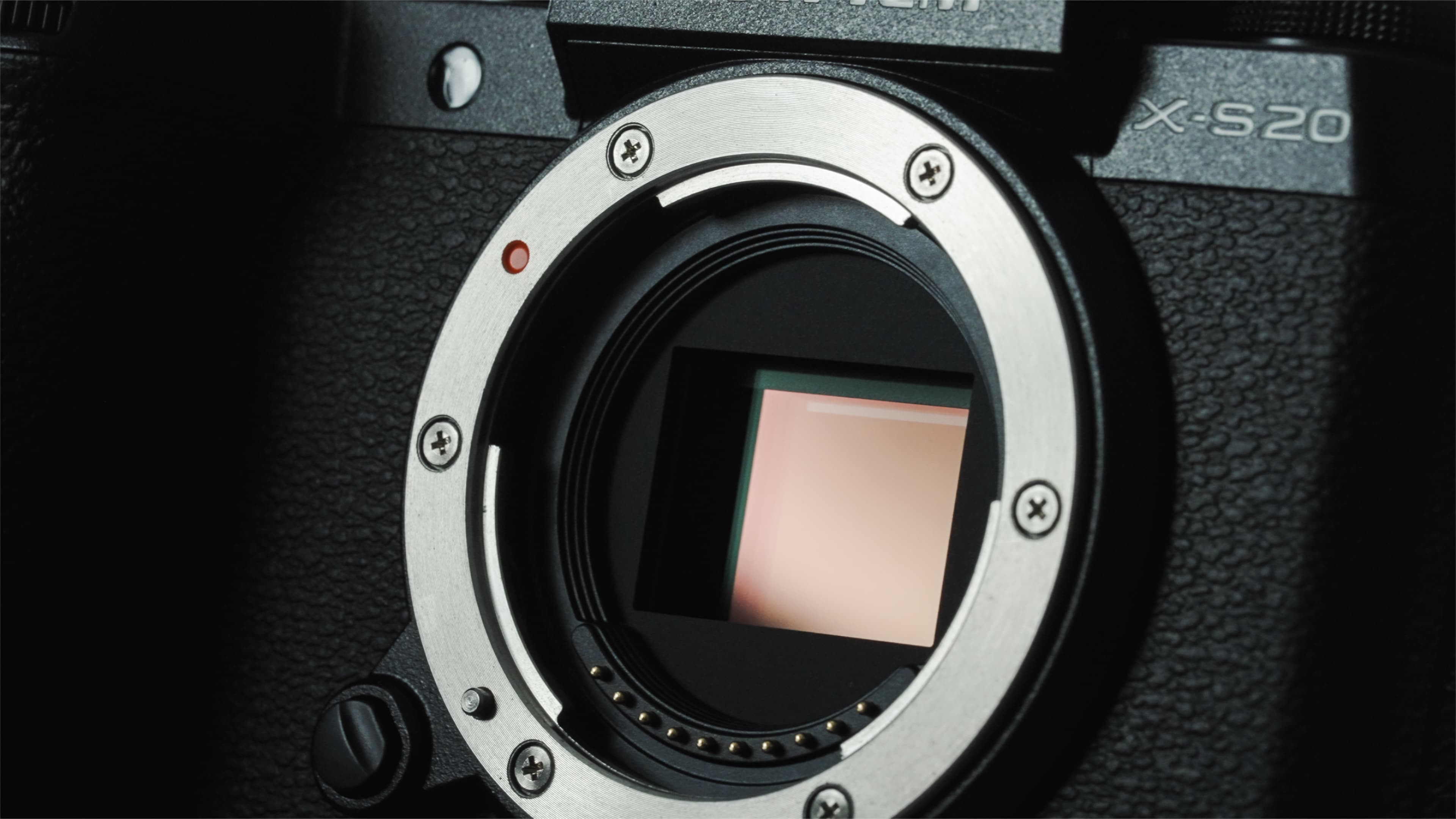
• Sony A6700: 26MP APS-C back-illuminated Exmor R CMOS image sensor with BIONZ XR
• Fujifilm X-S20: 26MP APS-C back-illuminated X-Trans 4, X-Processor 5
There's really nothing to choose between these two cameras' sensors. They use the same APS-C sensor size with a 1.5x crop ratio relative to full frame, and both have a resolution of 26 megapixels. Sony has employed its latest BIONX XR processor, while Fujifilm has boosted performance of the X-S20 with its latest X-Processor 5. Sony's sensor uses a conventional Bayer layout, while Fujifilm's uses its bespoke X-Trans setup.
2. ISO range
• Sony A6700: 100 to 32000 standard range, exp ISO 50 - 102400 for stills
• Fujifilm X-S20: 160-12800 standard, exp 80-51200 for stills, 25600 for video
On paper there are slight differences in the sensitivity ranges for these two cameras, but it's not enough on its own to swing things one way or the other. The X-S20 offers a slightly higher base ISO but the A6700 offers a higher maximum. In low light, however, this might be offset by the X-S20's higher stabilization rating.
3. Autofocus
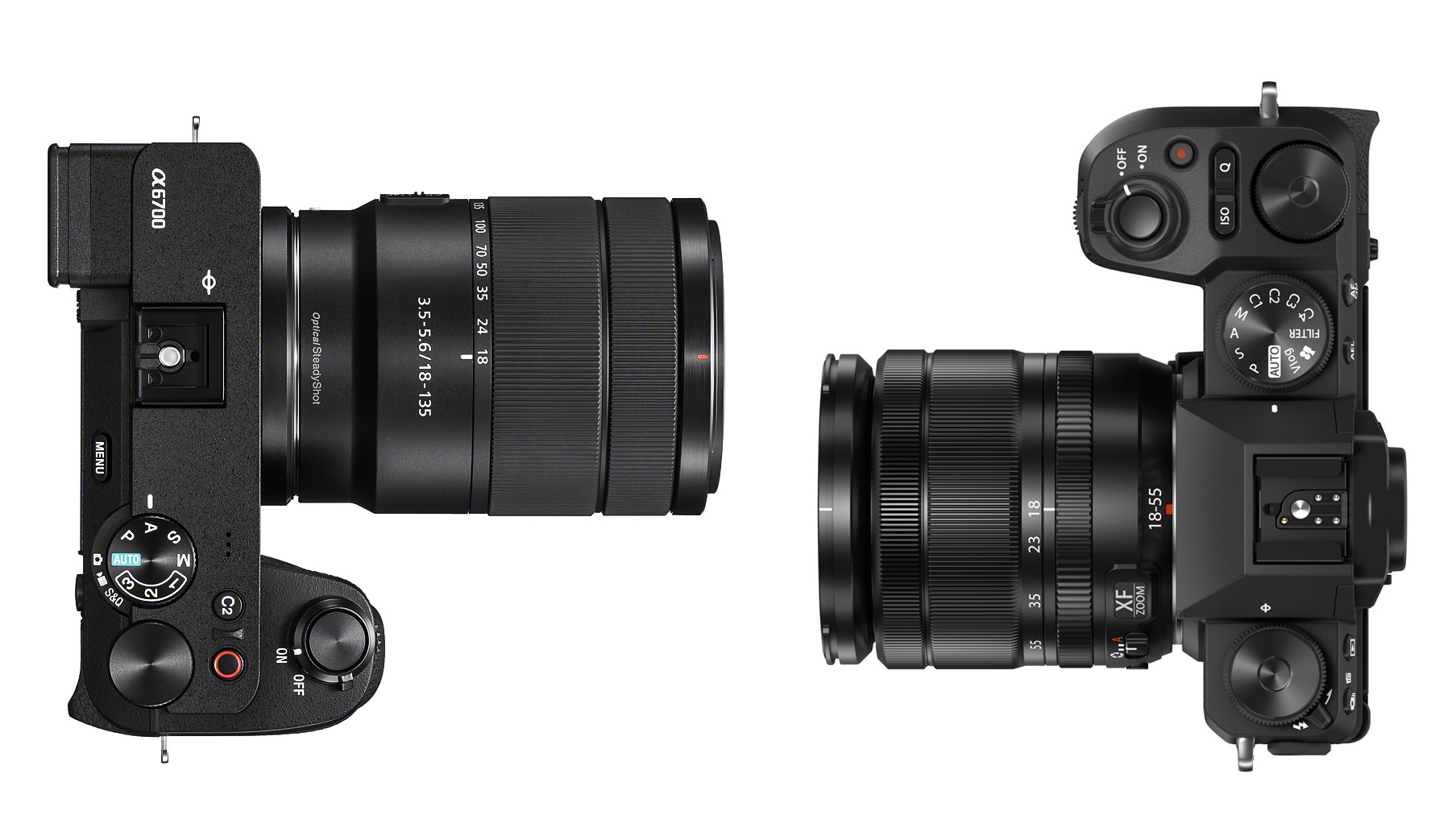
• Sony A6700: Hybrid phase/contrast AF, still images: max. 759 points (phase-detection AF), movies: max. 495 points (phase-detection AF), human, animal, bird, insect, car/train, and airplane recognition for both stills and video
• Fujifilm X-S20: Hybrid phase/contrast AF, single point AF: 13x9 / 25x17, Zone AF: 3x3 / 5x5 / 7x7 from 117 areas on 13×9 grid, Wide/Tracking AF, subject recognition for animals, birds, cars, motorcycles, bicycles, airplanes, trains, insects and drones.
AI subject recognition autofocus is the new frontier for camera makers, and both cameras offer next-generation deep learning technologies. The A6700 inherits the dedicated AI processor from the mighty Sony A7R V and uses it alongside its 759 phase detect AF points (495 in movie mode) to automatically recognize and track humans, animals, birds, insects, cars/trains, and airplanes.
Sony has a reputation for being the leader in mirrorless camera autofocus, but Fujifilm could be about to challenge that. The X-S20 has its own deep learning AI and recognize animals, birds, cars, motorcycles, bicycles, airplanes, trains, insects and drones. Fujifilm doesn't directly quote the number of available AF points on the X-S20, but does offer single-point AF, zone AF and wide/tracking AF in a variety of grid layouts.
4. Video
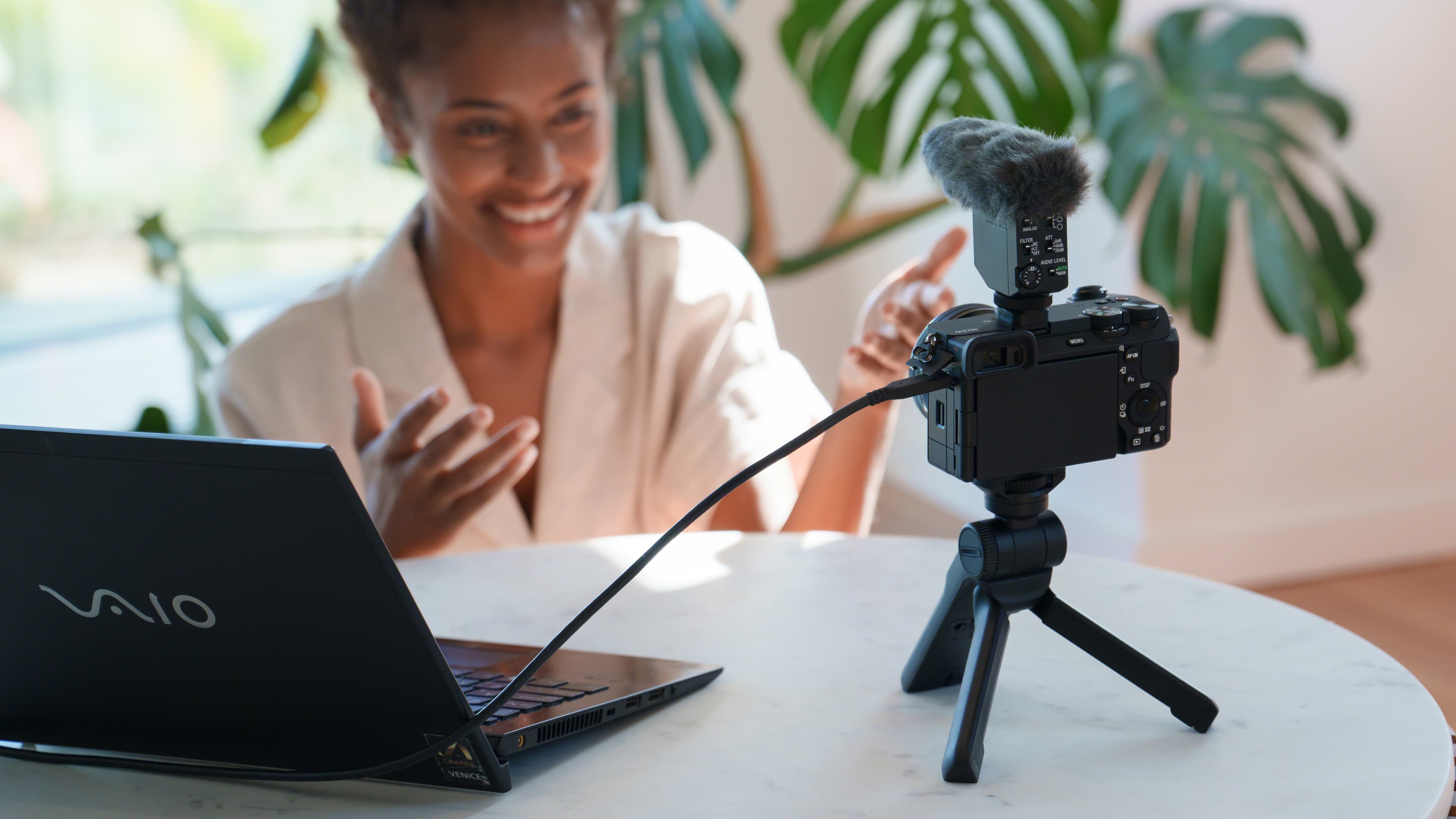
• Sony A6700: 4K 30/60p from 6K oversampling, up to 120p (QFHD (3840×2160. About 38% of the angle of view is cropped), 4:2:2 10-bit internal recording
• Fujifilm X-S20: 6.2K/30p 4:2:2 10-bit internal recording, 4K/60p video and 1080/240p high-speed video, Apple ProRes RAW or Blackmagic RAW via HDMI
Video specifications can quickly get complicated, with lots of permutations, limitations and provisos to take into account – so we'll summarize.
For internal 4K video recording, the Sony A6700 wins, just, by offering 4K 120p where the X-S20 only goes up to 60p. However, the Sony's higher frame rate has a heavy 38% crop without the 6K oversampling used for 30p and 60p recording, so there is a compromise.
But the X-S20 wins by a substantial margin for resolution, with its 6.2K 30p recording option. Not only that, it matches the A6700's 4:2:2 10-bit internal recording and goes one better, offering Apple ProRes RAW or Blackmagic RAW recording over HDMI to a Ninja V or Video Assist 12G respectively. Don't be fooled – the X-S20 might look like a jumped-up beginner camera, but it has video features hitherto unprecedented at this price.
It's swings and roundabouts with other features. The Sony A6700 has the S-Cinetone profile from its pro cinema cameras, S-Log3 recording with a claimed 14+ stops of dynamic range and an AI-driven Auto-Framing feature for tracking subjects automatically – though this does use a crop from a 4K image.
The X-S20 gets its own F-log and F-log2 profiles, a Vlog mode with touchscreen adjustments for filming yourself, a Product Priority mode and a Background Defocus mode. It can also use the clip-on FAN-001 cooling fan introduced with Fujifilm's higher-end models to extend recording times without overheating.
5. Stabilization
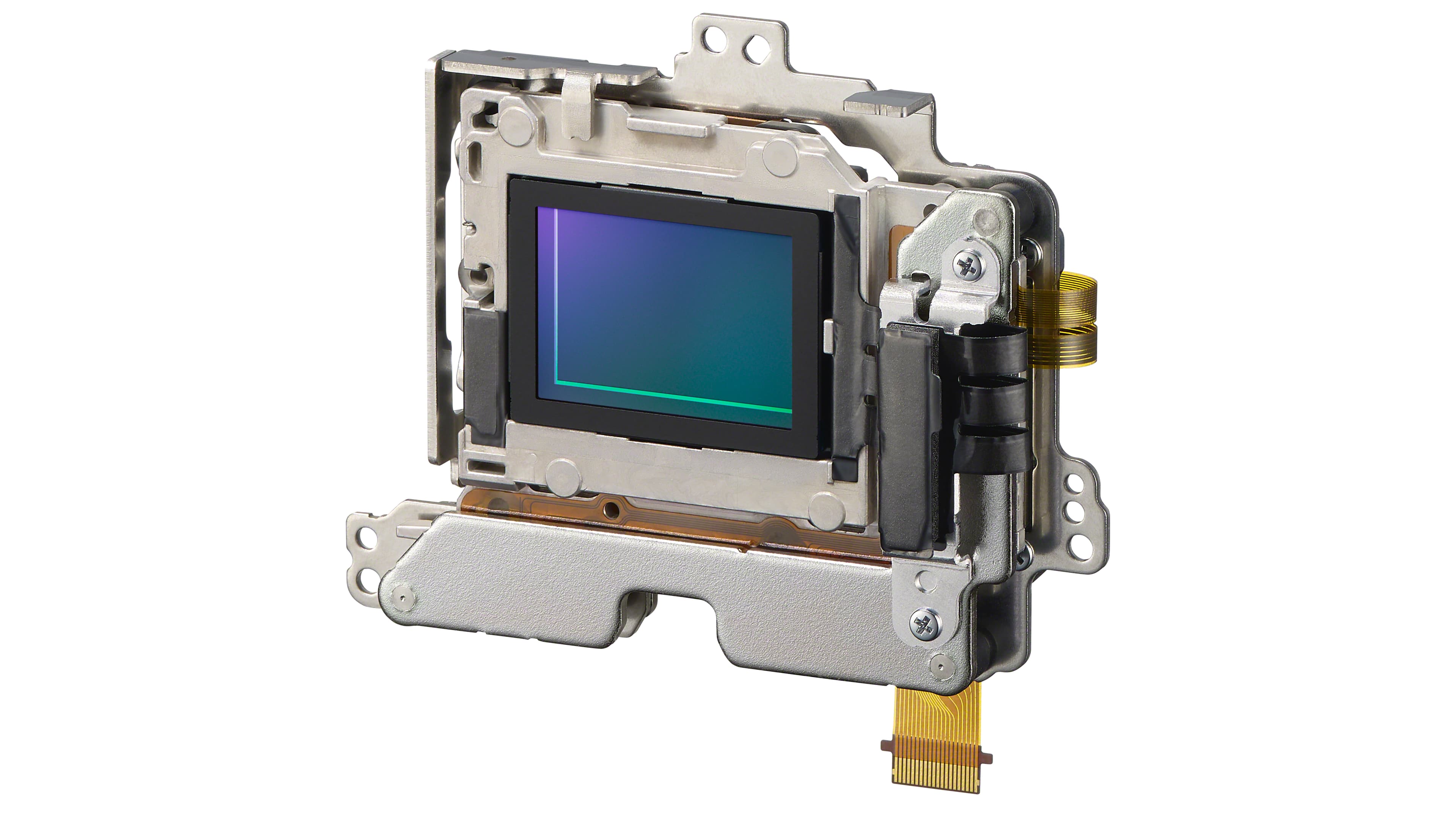
• Sony A6700: 5-axis IBIS, up to 5 stops compensation, based on CIPA standard
• Fujifilm X-S20: 5-axis IBIS, up to 7 stops compensation, based on CIPA standard
IBIS has yet to become a standard feature on all APS-C mirrorless cameras, and the flagship A6700 is the only model in the Sony A6000-range to get it (along with the A6600 and A6500 before it). Fujifilm seems to be introducing IBIS across the board, though, so while the X-S20 is the 'base' model in the latest Fujifilm range, it has IBIS built in.
On paper, Fujifilm's IBIS looks more effective, with up to 7 stops of compensation compared to 5 stops for the Sony. This is of course dependent on shooting conditions, and both companies quote best-case figures using specific lenses.
The A6700 has Sony's Active digital stabilization, which can be very effective, with the X-S20 offers digital IS for movies and IS Mode Boost on top of that.
6. Continuous shooting
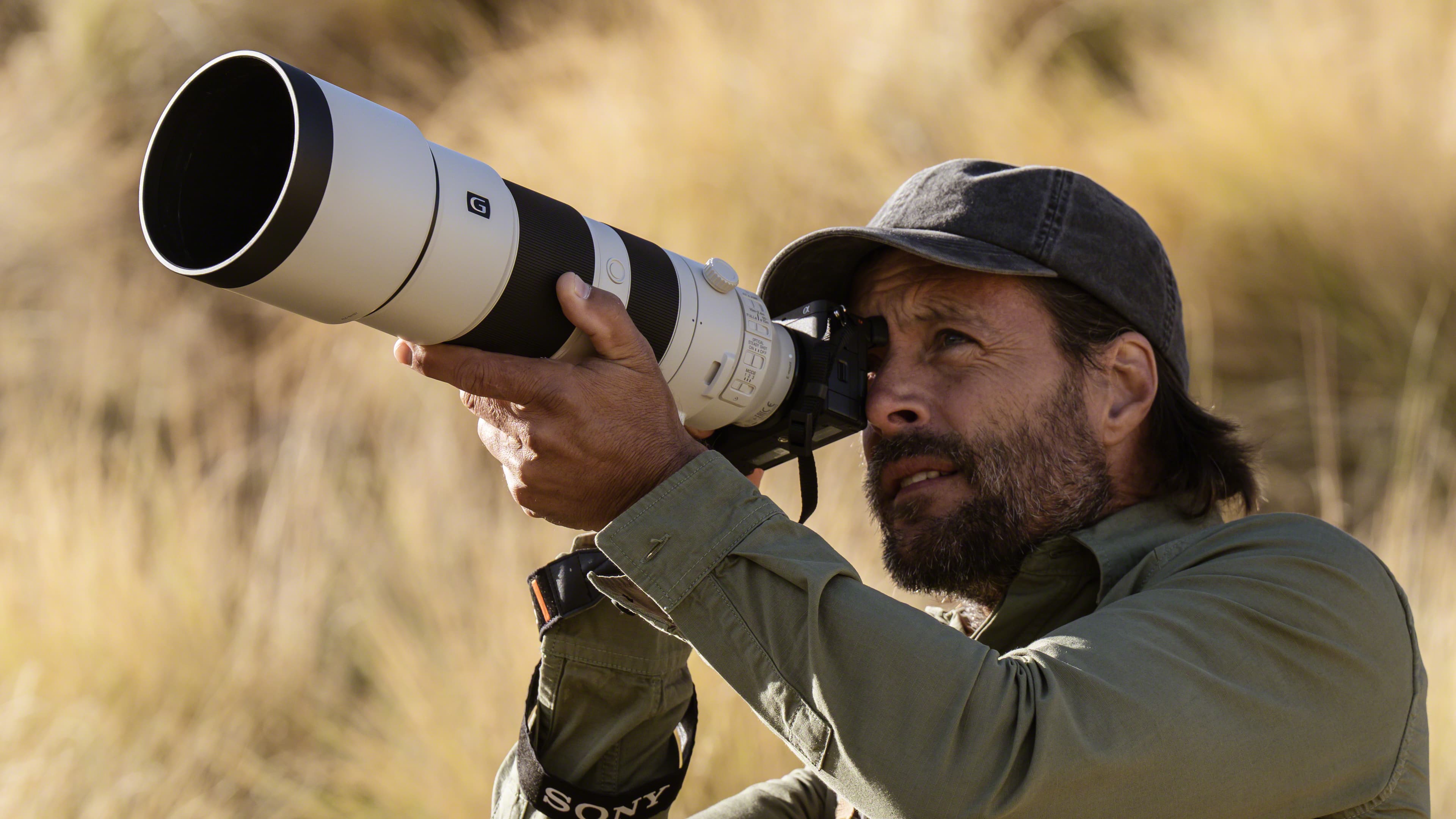
• Sony A6700: 11fps, JPEG Fine/Standard: over 1000 frames , RAW: 59 frames
• Fujifilm X-S30: 30fps electronic shutter, 1.25x crop, 407 JPG, 88 raw, 10fps electronic shutter, 1000+ JPEG, 341 raw, 8fps mechanical shutter, 1000+ JPEG, 1000+ raw
Sony's flagship A6000-series mirrorless cameras have always been pretty snappy for burst shooting, and the 11fps of the A6700 would have been impressive in a pro camera just a few years back. However, it comes with a relatively modest buffer capacity, so while you can shoot JPEGs to your heart's content, if you want to shoot raw the A6700 will start to slow down after just a few seconds.
The X-S20 offers much higher burst speeds by using its electronic shutter. There are a lot of frame rate/crop factor/shutter type combinations, so we've picked some highlights above. Broadly, if you accept a 1.25x crop you can shoot at 30fps with a similar buffer capacity to the A6700 at 11fps. If you opt for no crop, you can still shoot at 20fps, and at the 10fps setting the X-S20 beats the A6700's raw buffer capacity by a huge margin. The X-S20's mechanical shutter tops out at 8fps, which is a little slower than the Sony's 11fps, but offers an essentially unlimited buffer for both JPEGs and raw files.
The Fujifilm has a clear advantage for outright speed and buffer capacity, so if you shoot a lot of sports and action and prefer raw files to JPEGs, its a pretty obvious winner.
7. Viewfinder and screen
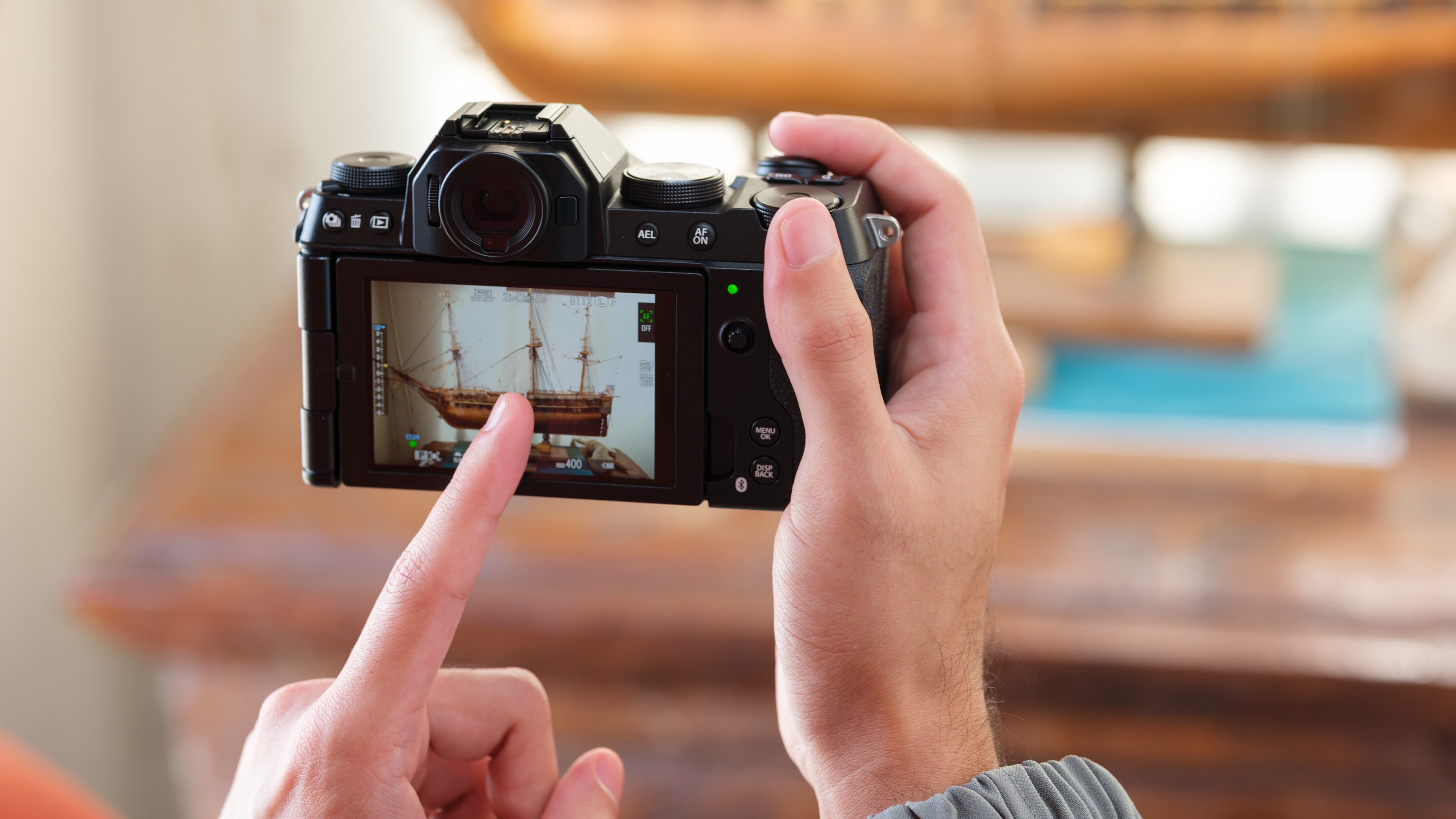
Sony A6700: 0.39-inch, 2.36 million dots, 0.71x magnification, 3-inch vari-angle touchscreen, 1,04 million dots
Fujifilm X-S20: 0.39 inch OLED, 2.36 million dots, 0.62x magnification, 3-inch vari-angle touchscreen, 1.84 million dots
Both cameras have an electronic viewfinder, but they're both on the stingy side, with a resolution of 2.36 million dots. That's certainly adequate, but it's at the bottom end of the scale for cameras in this price bracket.
Round the back they're very similar too. But while both have 3-inch vari-angle screens, the display on the X-S20 has a higher resolution for a crisper image. For some reason, Sony has often been pretty mean with its screens.
8. Storage
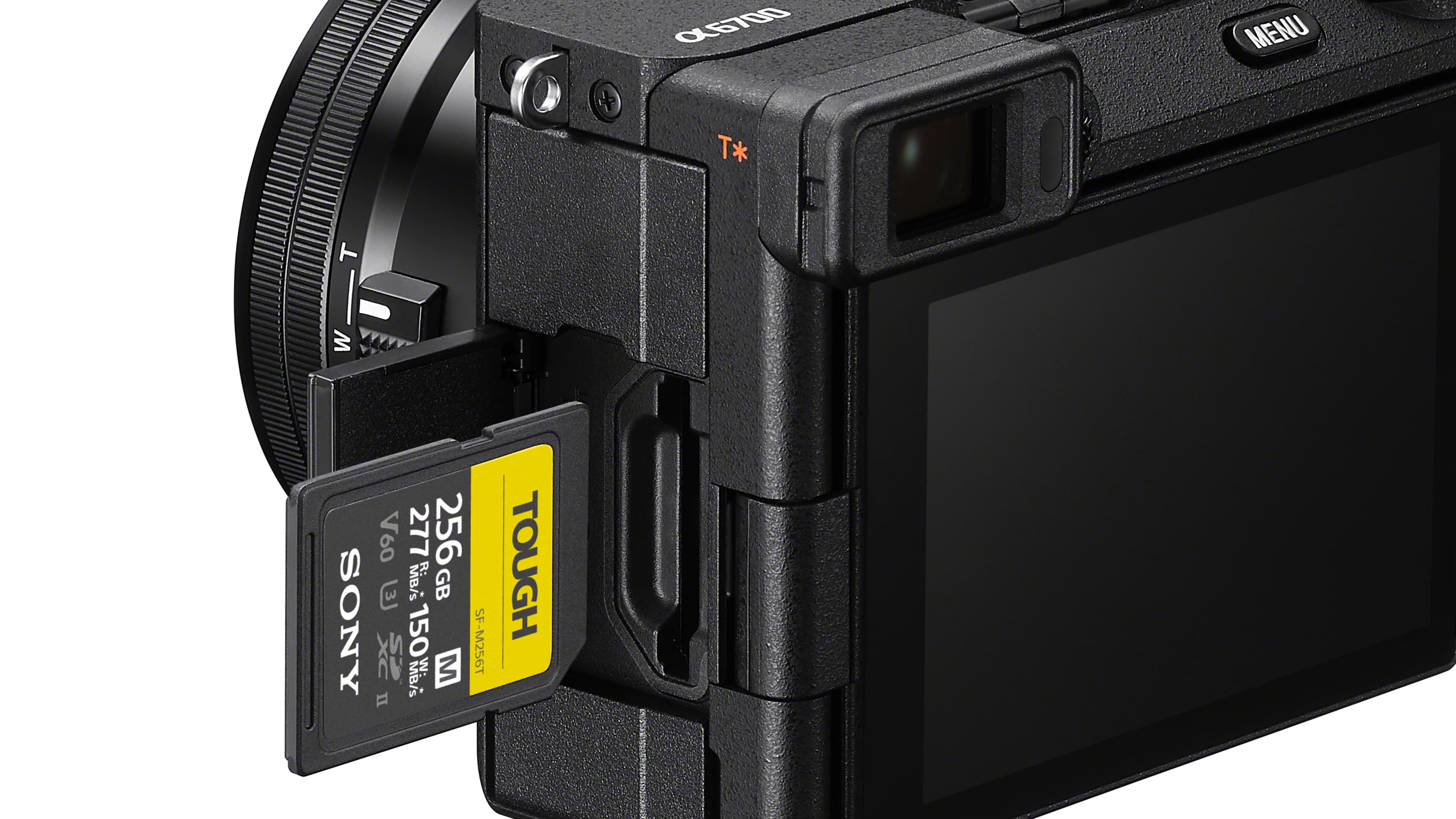
• Sony A6700: 1x SD UHS II
• Fujifilm X-S20: 1x SD UHS II
It's interesting that Sony has not been tempted to put a dual-format SD/CFexpress Type A slot in the A6700 as it has with some of its more upmarket models, but presumably this is down to price and market positioning. The Fujifilm X-S20 also makes do with a single SD card slot but at least filmmakers can fall back on external recorders and raw capture if the inbuilt codecs don't go far enough.
9. Power
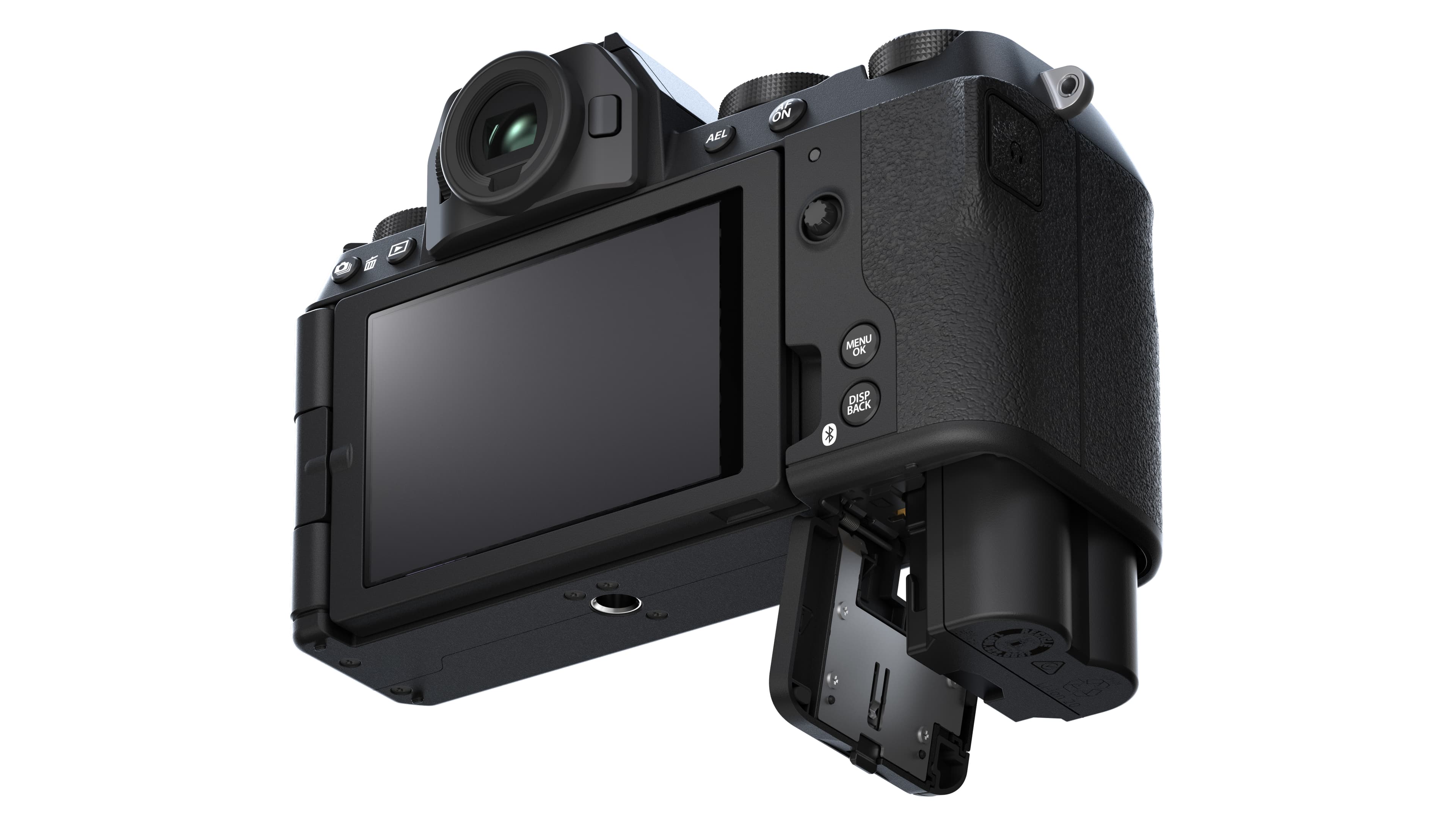
• Sony A6700: NP-FZ100, 550 shots (Viewfinder), 570 shots (LCD monitor)
• Fujifilm X-S20: NP-W235, 750 shots (800 in Economy mode)
Sony's FZ100 battery was a great leap forward in its full-frame Alpha cameras and it's very welcome here. Curiously, though, the quoted battery life is a good deal less than that of the A6600 before it. Fujifilm has also opted for a larger battery in the X-S20, practically doubling the battery life of the previous X-S10 with only a small increase in the grip dimensions.
Technically, the X-S20 comes out on top for battery life, but for any serious filmmaking you'll probably want to carry spares for both cameras.
10. Connectivity
• Sony A6700: Multi-Interface (MI) Shoe, USB Type C, HDMI micro connector (Type-D), mic, headphone, remote
• Fujifilm X-S20: USB Type C, HDMI micro connector (Type-D), mic, headphone
Filmmakers will be delighted to learn that the A6700 and the X-S20 have both mic and headphone sockets, though might be less pleased that the HDMI connectors are not full size but smaller and less secure Type-D connectors. The other difference is the A6700's Multi-Interface Shoe, which includes a digital audio interface for Sony's digital mics, including the new EC-M1 launched at the same time as the A6700.
11. Size and weight
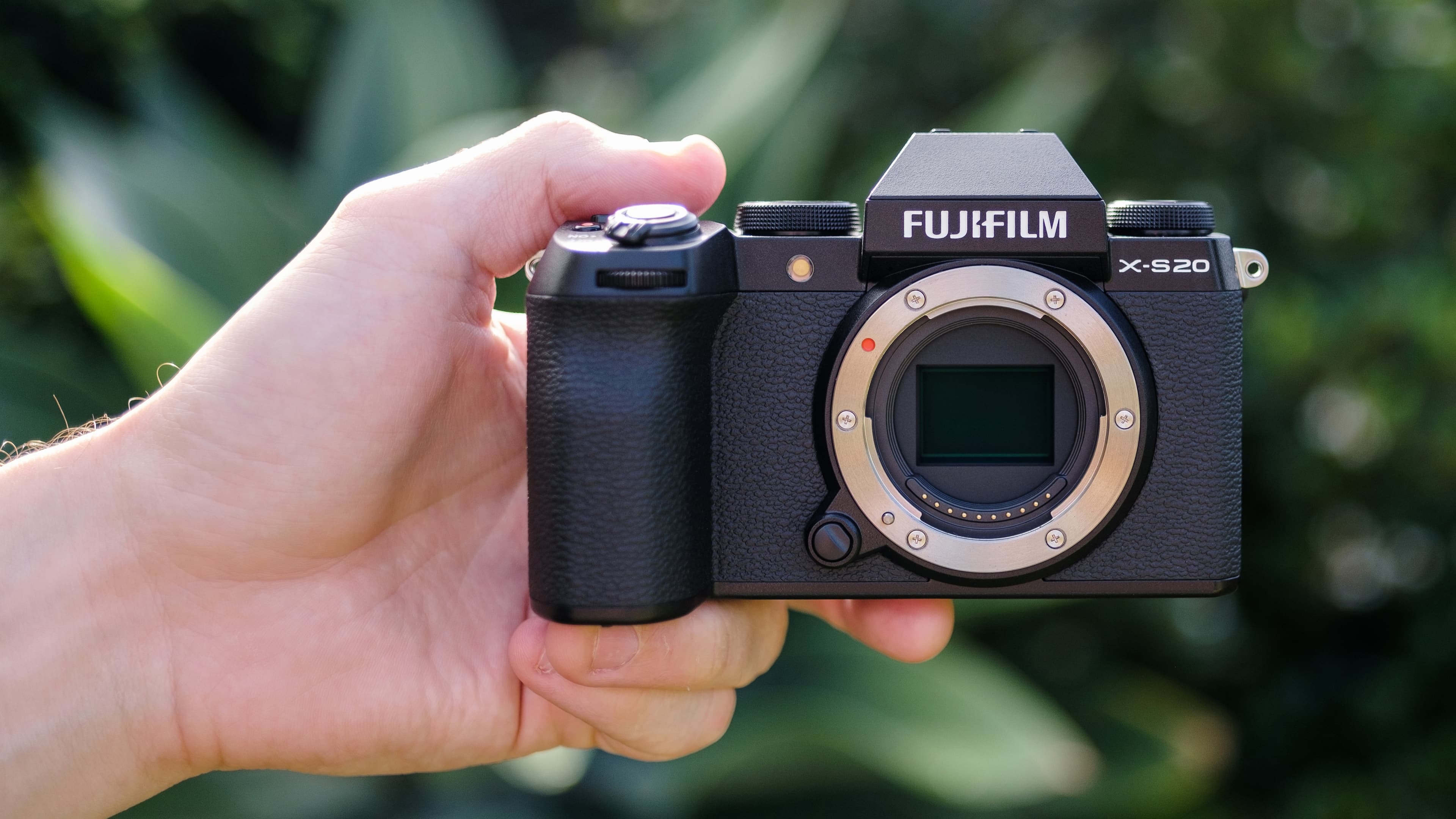
• Sony A6700: 122.0 x 69.0 x 75.1 mm, 409g
• Fujifilm X-S20: 127.7 × 85.1 × 65.4mm, 491g
These cameras are slightly different shapes, so exact size comparisons are difficult. Broadly, though the X-S20 is just a little larger and noticeably heavier – though the Fujifilm is still exceptionally compact for an APS-C mirrorless camera.
In practice, other factors will come into play, such as whether you prefer the A6700's rectangular 'rangefinder-style' design or the 'mini-DSLR' handling of the X-S20. The lenses you use will probably have a bigger impact on the handling than the differences in these bodies, too.
12. Price
• Sony A6700: $1398/£1449 body only, $1498/£1549 with 16-50mm, $1798/£1799 with 18-135mm
• Fujifilm X-S20: $1299/£1249 body only, $1399/£1349 with XC 15-45mm, $1699/£1599 with XF 18-55mm
At launch, the A6700 is roughly $100 more than the X-S20 in body only form and comparable kit lens combinations, and the difference is a little greater in the UK. That's significant, because across a range of features and specifications, you would have to say that the X-S20 gives you rather more.
Sony A6700 vs Fujifilm X-S20: conclusions

As we pointed out at the top of this article, if you've already invested in either the Sony E-mount or Fujifilm X-mount systems, you'll probably want to stick with what you've got – but you might still be interested in seeing how these two new cameras compare.
However, if you're currently deciding which way to jump – Sony or Fujifilm – then it's a whole lot more interesting.
Sony has an enviable reputation in the vlogging and filmmaking community for its AF technology, lens range and long history in this market (long in digital camera terms, anyway). It looks a safe bet. But the A6700 is more of an evolution than a great leap forward, using technologies Sony has already brought to the market in other cameras.
The Fujifilm X-S20 does, however, feel like a giant leap. It's not just way ahead of its predecessor, the X-S10, it's set new standards for what we can expect to get in a hybrid camera at this price. Good as the Sony A6700 is, the advances made in the Fujifilm X-S20 make it look somewhat pedestrian.
These are both terrific hybrid cameras, each with its own strengths, and both will do a brilliant job. We have to hand it to the X-S20, though, for delivering so much more and at a lower price.
The best Fujifilm lenses
Best lenses for Sony A6000 series cameras
Fujifilm X-S10 vs X-S20
Sony A6000 vs A6100 vs A6300 vs A6400 vs A6500 vs A6600
Get the Digital Camera World Newsletter
The best camera deals, reviews, product advice, and unmissable photography news, direct to your inbox!

Rod is an independent photography journalist and editor, and a long-standing Digital Camera World contributor, having previously worked as DCW's Group Reviews editor. Before that he has been technique editor on N-Photo, Head of Testing for the photography division and Camera Channel editor on TechRadar, as well as contributing to many other publications. He has been writing about photography technique, photo editing and digital cameras since they first appeared, and before that began his career writing about film photography. He has used and reviewed practically every interchangeable lens camera launched in the past 20 years, from entry-level DSLRs to medium format cameras, together with lenses, tripods, gimbals, light meters, camera bags and more. Rod has his own camera gear blog at fotovolo.com but also writes about photo-editing applications and techniques at lifeafterphotoshop.com
